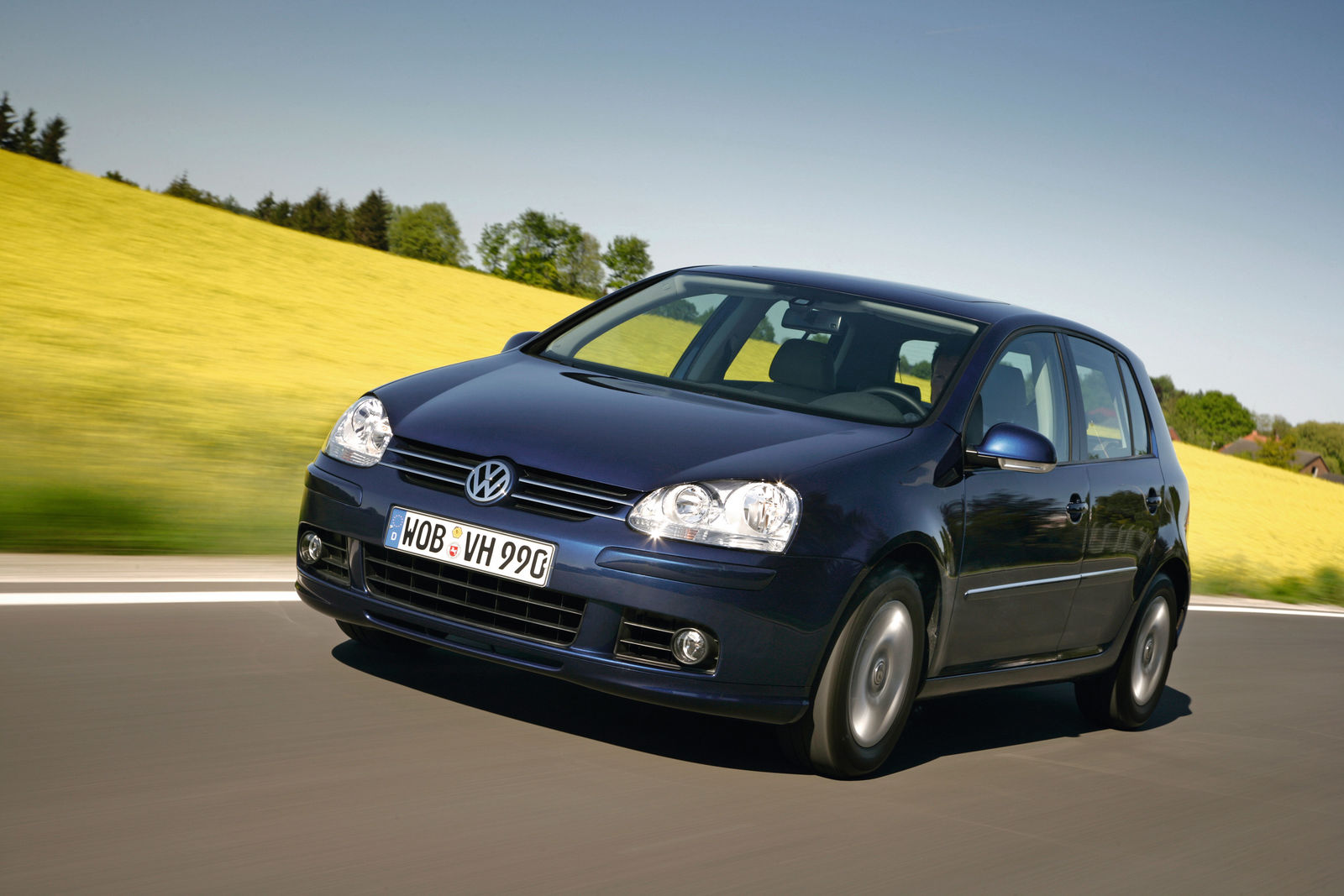This was the Golf that boasted levels of comfort and dynamic performance that left many a competitor in its class way behind. The same went for the car's quality. One factor that underlines the stability of the laser-welded bodywork was the 35 percent increase in torsion rigidity demonstrated when the Golf V made its debut in 2003. On request, the Golf was now also available for the first time with side airbags – together with the six standard airbags (front, side front and window) there were thus eight protective air buffers on board.
In terms of comfort as well as dynamic performance and handling, the Golf V scored in numerous areas, including: its new four-link rear suspension and new seven-speed DSG, bi-xenon headlights, rain sensor and panoramic sliding sunroof, plus the debut of the first turbocharged direct injection petrol engine in the Golf GTI (in 2004) and the world's first twincharger (in the 2006 TSI), combining turbo and superchargers. At the same time, new vehicle body versions also made the Golf attractive to a wider range of drivers. The Golf Plus was launched in 2006, and the year 2007 saw the launches of the CrossGolf, a new station wagon, and the Golf BlueMotion, which set a new benchmark with its combined fuel consumption of just 4.5 l/100 km. Including all derivatives, a total of 3.4 million fifth generation units was produced - that is, 0.68 million Golf cars annually.
The Golf V design
In 2003, Europe experienced the hottest summer in centuries. Johnny Depp and Keira Knightley feature in "Pirates of the Caribbean." Arwen aka Liv Tyler and Viggo Mortensen as Aragon round off a piece of cinematic history in the third part of "Lord of the Rings." But the greatest heroes in 2003 are the sorcerer's apprentice Harry Potter and the now six-times Formula 1 World Champion Michael Schumacher. For countless motorists, however, the highlight of the year was the launch of the new Golf in October! Its body was larger, safer and even higher quality. An essential aspect of this development is a significant improvement in stiffness - the static torsional rigidity was improved by 80 percent, the highest figure in the Golf class. This drastic increase in quality was to be reflected in the design of the Golf V. That's no mean feat, since the expectations on the car are on the increase with each new generation.
By 2003, the Golf had been the best-selling car from Germany for almost three uninterrupted decades. Purely in statistical terms, 2,055 customers around the world had decided to purchase a Golf, every day and since 1974. It has generally come to be regarded as "Das Auto," "The Car" par excellence, as the only compact class model that is truly classless. What about the fifth Golf? As it always was, and yet entirely different. Compared to its direct competitors, this Golf looked as classless and confident as any other Golf. This applied both to the technically related Audi A3 and the BMW 1 Series, a relatively new competitor in the segment. However, the competitors remain behind Wolfsburg in terms of sheer unit sales.
The fact is: the design of the Golf V with the characteristic C-pillar, the powerful rear, the sporty front end and the muscular silhouette, rising toward the rear appears more dynamic than its predecessor. Interesting detail for insiders: the 1:4 model already looked like the actual car on the road. It's rare for a car design to remain so consistent. The Golf V once again came with a shoulder that runs toward the rear; the front is flat as was the case with the Golf IV. The front end with the integral lighting was a big step: for the first time, the hood followed the contour of the headlights like in a race car. This had not been the case with the Golf IV. Moreover, the three-dimensionally shaped headlights were pulled laterally into the fender. Another first were the two-part tail lights in this Golf that extended into the tailgate. And there are also some secrets: the design of the Golf V headlights had a surprising similarity to the tail lights of the first Porsche Boxster, while the radius of the rear window in the Golf V, however, strikingly followed the lines of the EA 266 - an unrealised prototype of the Golf I. Incidentally, many experts regard this generation's Golf GTI as one of the most powerful cars ever sold under the Golf label.
